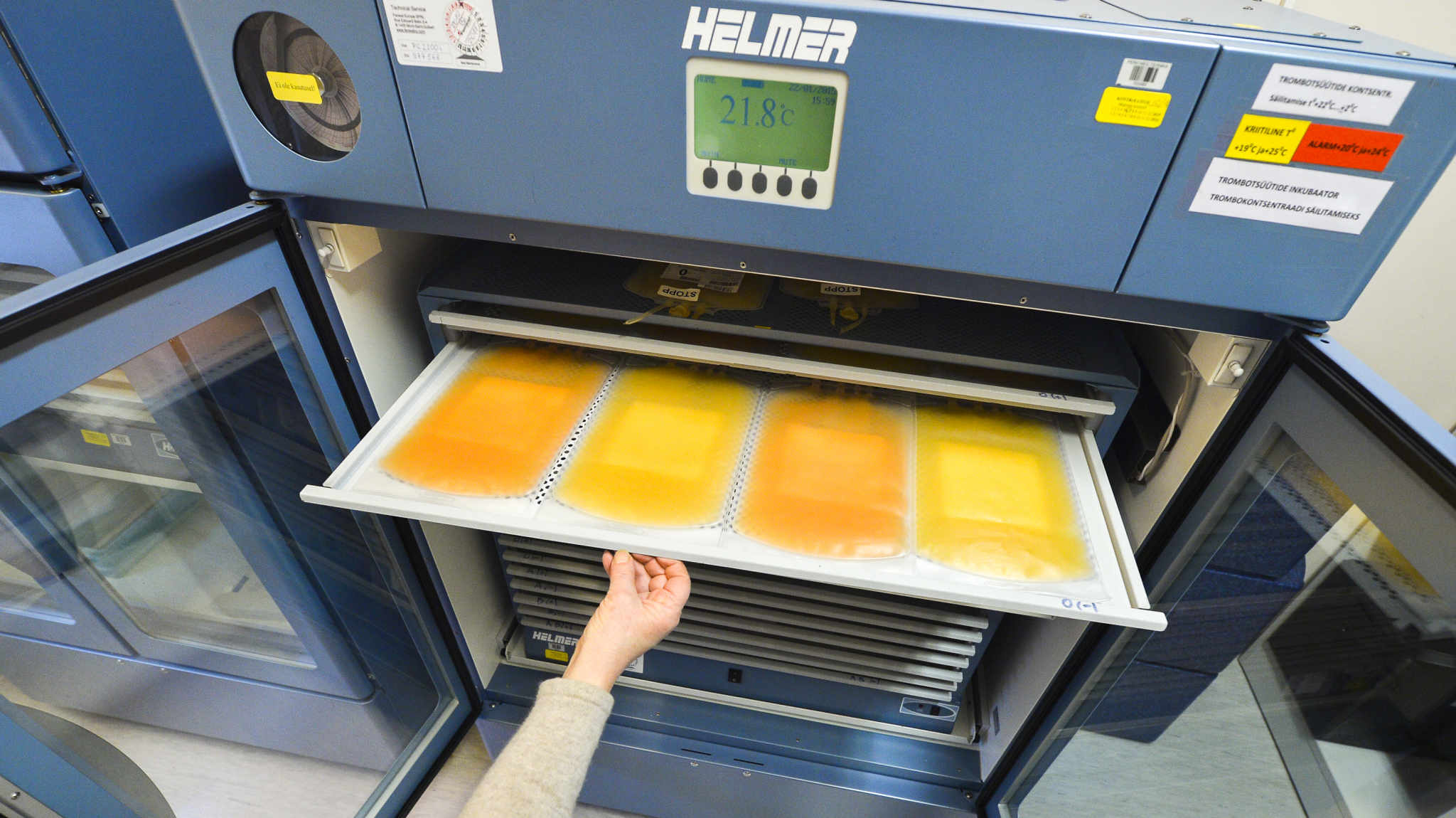Platelets (Thrombocytes)
Platelets are cellular fragments that are involved in the clotting process. Their main function is to ensure the integrity of blood vessels.
If a blood vessel is damaged, thrombocytes mass at the site of the injury and together with clotting agents in the plasma, they form a clot that stops the bleeding. The lifespan of thrombocytes is five to 10 days, and thus they have to be constantly replenished.
Thrombocytes make up under 1% of the blood’s volume (about 45% is erythrocytes and 55% plasma, and under 1% is leukocytes).
The platelets separated from donor blood can made into a thrombocyte concentrate by adding a storage solution. Platelets from five whole-blood donors are used to prepare one treatment dose for transfusion. Thrombocytes can also be donated by the apheresis method.
Platelets for transfusion can be stored five to seven days at +22 °C. At the Blood Centre, the concentrates are kept in a special cabinet with moving shelves, which ensures that the platelets remain viable and at full value.
Platelet transfusions are given to people who have too few of them in their bloodstream or whose thrombocytes don’t function properly, such as patients with leukaemia who have undergone intensive chemotherapy. Thrombocyte concentrate is also transfused to people with blood and liver diseases, other forms of cancer, burns and major blood loss.
